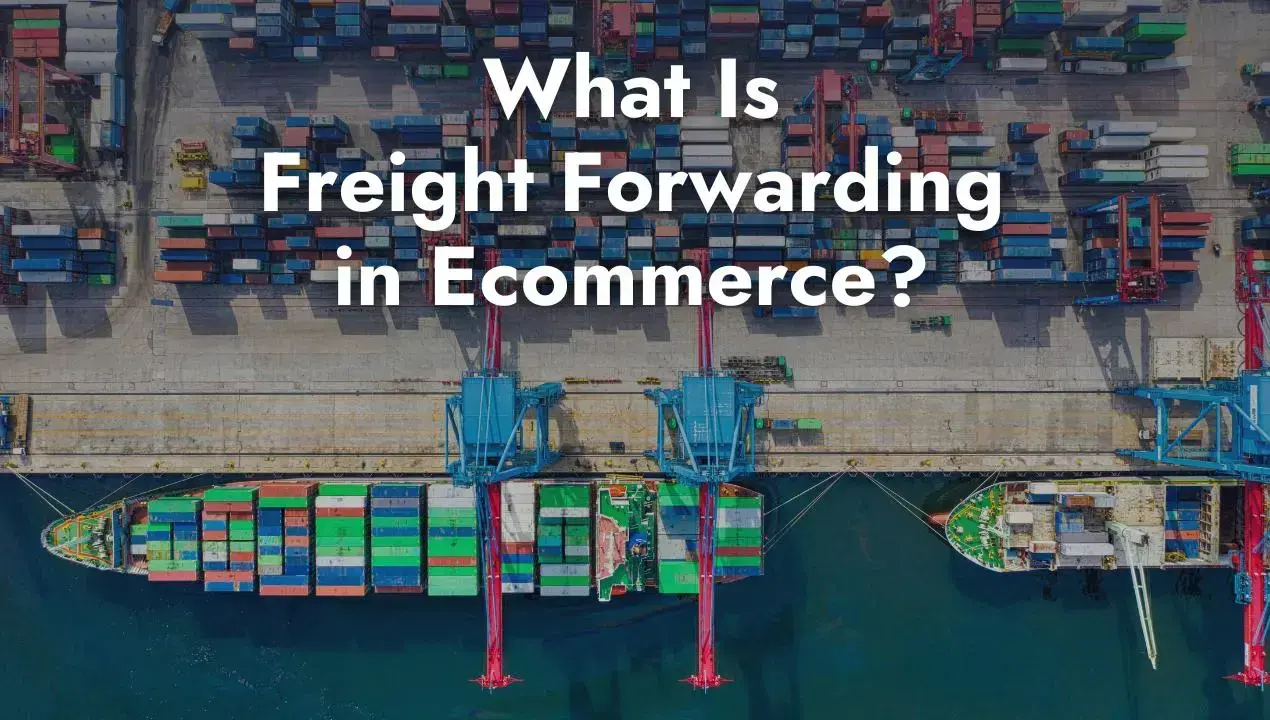Share this
DAP vs DDP: Compare Key Differences, Risks & Responsibilities
by Rin Mosher on Feb. 8, 2024

Shipping arrangements play a big role in determining your product delivery success, especially when sending orders to international customers. As a seller, you may have heard of the terms Delivered At Place (DAP) and Delivered Duty Paid (DDP). Both arrangements are viable shipping options for businesses in the ecommerce space, but they differ in terms of risk, responsibility, and costs.
This article compares the pros and cons of DAP vs DDP shipping and provides guidance on which might be a better fit for your business needs.
What Is Delivered at Place (DAP)?
Delivered At Place (DAP) is an Incoterm (International Commercial Term), which acts as a shipping standard that outlines an agreement between a buyer and seller. Under this term, the seller is responsible for delivering the goods to a specific location agreed upon by both parties. This location can be a port, warehouse, or residential address.
With DAP shipping, customs duties are unpaid up until delivery to the agreed-upon final destination. The buyer must arrange the payment of import taxes and duties with local customs clearance in order to take possession of their package.
With direct-to-consumer ecommerce orders, this is usually settled with a bill presented to the end customer before or at delivery. Customers are responsible for covering any duties levied during the shipment process, which is a separate fee from the product price they paid during the online checkout process.
Under a DAP arrangement, sellers have the following responsibilities:
- Properly packaging products for shipment
- Supplying documentation
- Acquiring approval for export, if required
- Shipping packages out
- Delivery to destination
The buyer’s responsibilities in a DAP agreement are:
- Paying import duties, taxes, and/or brokerage fees as applicable
What Is Delivered Duty Paid (DDP)?
Delivered Duty Paid (DDP) means that the seller is responsible for delivering goods to a specified location, like with DAP, but is also responsible for covering the expenses of doing so. These extra expenses can include charges like duties and import taxes, depending on the destination.
Ecommerce stores that ship packages to other countries often factor this into the pricing of their products to offset the final costs that come with DDP shipping. Prepaid duties can also be baked into a merchant’s upfront shipping fee or included as an additional explicitly stated charge at checkout.
Whatever the case, a store’s checkout portal must be set up in a way that recognizes when DDP shipping costs apply and can process customer orders according to local currency.
In addition to higher upfront costs, it’s also worth noting that sellers generally assume more risk under a DDP arrangement. They have the responsibility of not only packaging and loading goods, but also ensuring a shipment is prepared properly for international delivery.
This can include preparing necessary exportation and importation documents; acquiring approval from the receiving country’s customs authorities; paying inspection fees; paying applicable local, regional, and federal taxes; and providing Proof of Delivery (POD).
With DDP shipping, however, the final end customer is not presented with a taxes or duties bill that must be settled before receiving their package, since they have already been paid.
Under a DDP arrangement, sellers have the following responsibilities:
- Properly packaging products for shipment
- Arranging for export clearance, if required
- Arranging for import clearance from the destination country’s authorities
- Paying import and export duties and/or applicable taxes (typically using funds prepaid by the buyer during checkout)
- Arranging and paying for domestic transportation
- Providing Proof of Delivery (POD)
Here are the buyer’s responsibilities in a DDP agreement:
- Prepaying brokerage and import duties at the time of checkout
- Receiving/signing for the package at the final delivery address
DAP vs. DDP: Which Is Better?
Both DAP and DDP shipping are viable ecommerce shipping arrangements. What makes one the right option for you will depend on the type of products your business sells, the location of your customers, and your risk tolerance. Take a look at the following pros and cons to identify which option makes the most sense for your ecommerce business.
Advantages of DAP Shipping
More Cost-Effective
DAP is generally considered more cost-effective when weighing DDP vs. DAP shipping for sellers because the buyer takes on more financial responsibility upfront. That may be appealing for budget-conscious sellers, especially if they’re sending smaller packages or low-value goods that aren’t economical to ship long distances.
Less Risk for Sellers
With DAP shipping, the buyer takes on more risk during transit. The seller is only responsible for getting the shipment to a designated entry point and clearing it through customs. After that, they are not liable for any issues that occur during domestic transit. If a local courier responsible for unloading a package were to damage it at the final delivery address, for example, that company would be the one that answers to the buyer.
Disadvantages of DAP Shipping
Negative Impact on Customer Experience
The biggest potential drawback that comes with using DAP vs. DDP shipping is a negative impact on customer experience. Because the applicable duties and/or taxes are not prepaid with DAP shipping, the end customer must pay another fee before they are able to receive their package. This can be an inconvenient and unexpected surprise, especially for customers who assumed they already paid in full when ordering online.
Because clearing customs can take days or sometimes even weeks after an order has been placed, it can feel like an extra expense even if duties would have been factored into the purchase price anyway.
What’s more, because payment is required, package handoff usually takes place at a post office or designated pickup location rather than the customer’s doorstep. In this scenario, buyers no longer have the convenience of receiving packages at their residential delivery address and must instead make an additional trip to pick up their order. Limited post office operating hours further add to the burden.
Potential for Delivery Refusal
It's not uncommon for customers to change their minds upon learning they'll have to pay for or coordinate import fees. In these cases, they may choose to refuse the delivery altogether. This can result in a chargeback for the seller if the customer disputes the order, the cost of returning the refused goods to the country of origin depending on the sales contract, lost sales, and negative reviews.
Advantages of DDP Shipping
More Seller Control
DDP shipping gives the seller more control over the entire shipping process. They are responsible for arranging all aspects of the shipment and can ensure that it is done to their standards. This can be especially beneficial for sellers who have specific handling requirements for their products.
Positive Impact on Customer Experience
With DDP shipping, the seller takes on more responsibility and risk, but this can lead to a better customer experience. By handling all aspects of the shipment, the seller can ensure that it arrives on time and in good condition. They have full insight into transport status and are better positioned to see delivery through to the very end.
Most importantly, customers enjoy the additional convenience of receiving orders at their homes rather than having to visit a pickup location or post office. Because duties and taxes have been paid in advance, there are no surprise charges to pay, either.
Disadvantages of DDP Shipping
Required Expertise
The exportation and importation process is long and laborious. Sellers who choose to handle it all under a DDP arrangement will require expertise in several areas, including customs duty, customs clearance, import taxes, and other international shipping regulations. In some cases, they may also need to obtain an import license. This can be a daunting task for sellers who are limited in resources.
More Liability
To contrast the point made earlier, DDP shipping's designation of responsibility to sellers can also be a liability. They must arrange everything from export to import to the last mile and have a plan in place should anything go wrong along the way. If issues like delays or handling mix-ups arise, it’s the business’ reputation that will suffer. Need
Shipping And Fulfillment Support?
While both DAP and DDP refer to shipping arrangements for international deliveries, there are some key differences between the two. By taking the time to understand them in full, you'll be better equipped to arrange an order delivery process that makes sense for your ecommerce business and its customers.
In search of a simplified solution to ecommerce fulfillment? Shipfusion's expert abilities as an industry-leading third-party logistics (3PL) provider deliver just that. Pairing advanced technology with an extensive network of warehouses and staff, we specialize in making the complicated easy. Learn more about our top-rated ecommerce fulfillment services.
Share this
You May Also Like
These Related Articles

What to Know About DDP Shipping In 2024

DDP vs DDU: Choosing the Right Shipping Terms for Your Business

What Is Freight Forwarding In Ecommerce?
- April 2025 (9)
- March 2025 (26)
- February 2025 (26)
- January 2025 (37)
- December 2024 (16)
- November 2024 (23)
- October 2024 (22)
- September 2024 (27)
- August 2024 (9)
- July 2024 (8)
- June 2024 (5)
- May 2024 (8)
- April 2024 (8)
- March 2024 (6)
- February 2024 (6)
- January 2024 (5)
- December 2023 (3)
- November 2023 (3)
- October 2023 (5)
- September 2023 (4)
- August 2023 (2)
- July 2023 (1)
- June 2023 (4)
- March 2023 (2)
- October 2022 (1)
- September 2022 (5)
- August 2022 (4)
- July 2022 (7)
- June 2022 (4)
- May 2022 (4)
- April 2022 (6)
- March 2022 (2)
- February 2022 (1)
- January 2022 (3)
- December 2021 (2)
- November 2021 (4)
- October 2021 (2)
- September 2021 (5)
- August 2021 (4)
- July 2021 (4)
- June 2021 (3)
- May 2021 (2)
- April 2021 (3)
- March 2021 (3)
- February 2021 (3)
- January 2021 (2)
- December 2020 (4)
- November 2020 (2)
- October 2020 (4)
- September 2020 (2)
- July 2020 (5)
- June 2020 (4)
- May 2020 (2)
- April 2020 (2)
- March 2020 (4)
- February 2020 (1)
- December 2019 (1)
- May 2018 (1)
- March 2018 (2)
- February 2018 (3)
- January 2018 (3)
- November 2017 (3)
- July 2017 (4)
- March 2017 (3)
- February 2017 (5)
- January 2017 (3)
- December 2016 (4)
- November 2016 (6)
- October 2016 (6)
- October 2015 (1)
- September 2015 (1)
- June 2015 (3)
- May 2015 (3)
- August 2014 (1)
- July 2014 (1)
- March 2014 (1)
- February 2014 (1)